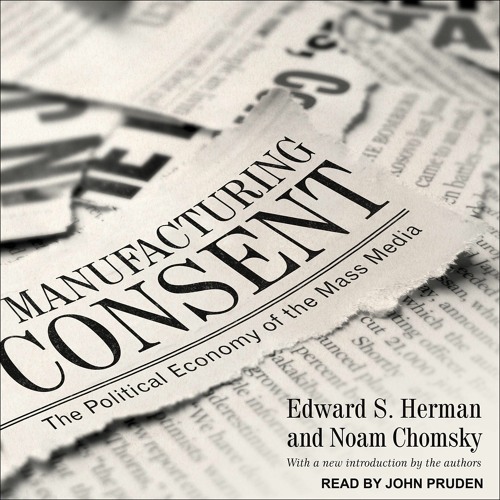What does manufacturing consent mean?
In simple way it demonstrates how the upper class manipulates and skews the news in order to persuade the masses to believe whatever suits them best.The five filters are as follows:
(1) ownership; (2) advertising; (3) official sources; (4) criticism; and (5) marginalisation of dissent.
The Applicability of Herman’s and Chomsky’s Propaganda Model Today:
- Walter Lippmann asserted in 1920 that propaganda was already “a regular organ of popular government.” He referred to media propaganda as the “manufacturing of consent.” Ben Bagdikian, who wrote the book “Media Monopoly,” published for the first time in 1983, cautioned that “It is the overwhelming collective power of these firms, with their corporate interlocks and unified cultural and political values that raise troubling questions about the individual’s role in the American democracy.”
- Today, various forms of modern media can be used to deliver propaganda to its intended audience, including radio, television, films, posters, handouts, music, and smartphones, to name a few.In order to sway the audience towards or against a particular belief, modern propaganda still employs classic tactics such as name-calling and bandwagoning.
NAME CALLING or STEREOTYPING: Labelling a person or an idea negatively by using an easy-to-remember derogatory name.
VIRTUE WORDS or GLITTERING GENERALITY: These words are used to deceive us into recognising and agreeing with things without carefully scrutinising the evidence.

Richard Alan Nelson defined propaganda as “a form of persuasion with intention through the controlled transmission of single-sided information through mass media” to explain the close relationship between media and propaganda. Propaganda and mass media are inextricably linked.

- There is also a distinction between the propaganda model’s political implications and mainstream scholarship. If structural factors shape the broad contours of media performance, and that performance is incompatible with a truly democratic political culture, then genuine democracy requires fundamental changes in media ownership, organisation, and purpose. Such a viewpoint is politically unacceptable in mainstream analyses, and its supporting arguments and evidence are rarely debated.
REFERENCES:
- https://monthlyreview.org/2018/01/01/the-propaganda-model-revisited/
- summary of the book ‘Media Monopoly ohttps://groups.google.com/g/misc.activism.progressive/c/s0oxZIo4AWM?pli=1
- Solidarity union in 1980-81- https://youtu.be/peT3-xSzj08?si=17clZFvpBbQJqEtC
- https://medium.com/@thebookwormsquill/a-review-of-manufacturing-consent-the-political-economy-of-the-mass-media-fc9f2e3adeb6
- https://youtu.be/34LGPIXvU5M

